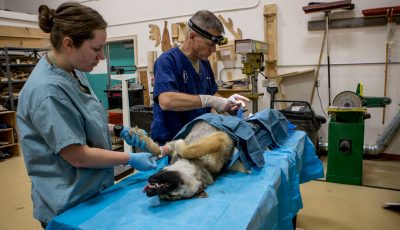Dusted in the air war
Whether you’re up against coral dust, tree pollen, or just regular ol’ dusty dust, keeping household surfaces clear of the stuff can be a battle. I decided to enlist some automation for this fight.
There are dozens, if not hundreds, of electric air purifiers on the market. Naturally, various retailing websites provide consumer ratings and feedback about various models. Some models have tallied thousands of reviews, so this is apparently a lively industry.
Most of the purifiers that I’m aware of are essentially fans that blow air through a filter. These filters are often called “HEPA” filters, for High-Efficiency Particulate Air, which is a common reference to a standard for filtering capability. The world of HEPA ratings and specifications is a pretty involved one.
For example, a common specification with the purifiers I tried was a HEPA filter that removes 99.97 percent of particles down to a diameter of 0.3 microns. To put this in perspective for my context, I’ve read that dust measures 10 microns. I don’t know how coral dust, a big deal in the islands, measures up. Anyway, I wish someone would just invent a dust filter, but I’ve not seen such a thing.
However, all of the purifiers that I tried did have pre-filters, which were less expensive than the main filters and serve to catch the bigger stuff (like, yes, dust) thus relieving some of main filter’s burden.
There are other techniques to clean up the air, and these are often used in conjunction with the physical filtering. Many appliances use electronics to “ionize” the air, which, some credible sources claim, is an unhealthy thing because it can produce ozone, so you’re on your own on that note. Some appliances use things like ultraviolet light to disinfect the air as it flows through them.
Here’s one thing I found about filters: They can be expensive. The first air purifier I bought was in the medium-sized category, but to replace its array of filters was heading for over $200 a year. Oddly enough, though these expensive filters seemed to be getting plugged up all the time, the room was still gathering some dust. I suspect that a lot of the air was slipping by the filters and was being blown back into the room, whereupon it would land in the most remote of crannies, such as behind the books on the bookshelf. I gave up on that thing. I should probably give up on books, too, and simplify things all the way around.
Anyway, I then tried two models of smaller, desktop-sized air purifiers. Each model was well-designed but neither seemed adequate for anything but a really tiny room, so that was the end of that.
Since small didn’t work, I decided to go big. I bought a beer-keg sized appliance that seemed to move as much air as a B-52 engine on takeoff. Unfortunately, it also sounded like a B-52 on takeoff.
The prices of the models I tried ranged from about $40 for the small ones to $150 for the biggest one, and they likewise ranged from (noise notwithstanding) being suitable for a small room up to being suitable for a large room. Of course, as noted, the filters themselves can be expensive, so the actual cost of the machine itself isn’t the real story. I’ll mention that some of these machines claim that their filters can be vacuumed clean.
I’ll also mention that some purifiers are far more expensive than the ones I tried. If you want to spend $400 or more, there’s no shortage of options.
Meanwhile, the HEPA filter specifications aren’t the only specs out there. For example, the “Clear Air Delivery Rate” offers ratings for how quickly a purifier processes the air for tobacco smoke (that’s one rating), dust (that’s another rating), and pollen (yet another rating). The CADR ratings are usually easy to find but they apply to a purifier’s maximum (i.e. LOUDEST) fan setting.
I asked my friends about this situation. The consensus is that there is no more dust these days than there was before, but we’re just more inclined to notice it. It’s just one weird consequence of sinking into middle age. Also, there seems to be a broader awareness that the air in the great indoors can have an effect on your health. Just about everyone I know has at least one air purifier, but nobody seems particularly enthusiastic about them.
Anyway, I decided to give things one last try. This last try is the Honeywell 17000-S. It’s roughly the size of a heavy-duty office laser printer. It cost about $90. It is, mercifully, very quiet at its lower settings, it seems to move a meaningful volume of air, and the design seems good. Will this do the trick? I don’t know, but, either way, I’m not trying another one of these things, so I am going to let the dust settle where it may.



























